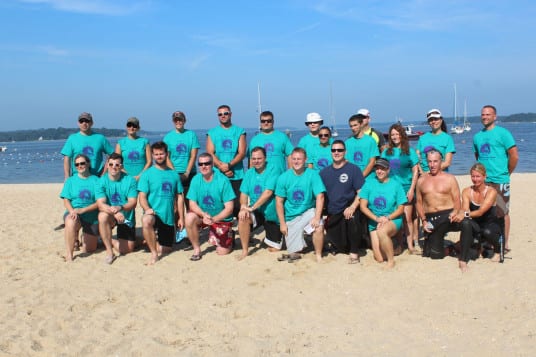When Daniel Madigan is out working, he sometimes has no access to a computer, an iPhone or email and that’s just fine by him. Instead of searching for parking spaces, waiting for traffic lights and standing in line at a grocery store, he rocks back and forth on the ocean, seeking answers to questions deep below the surface.
An NSF postdoctoral fellow at the School of Marine and Atmospheric Sciences at Stony Brook University, Madigan said the typical month he has spent over the last four years on the Pacific Ocean has given him a “sense that this is where I want to be. You see something you’ve never seen before, every time.”
He’s watched a killer whale feeding on tuna and has witnessed a school of yellowtail jack beating with their tails on a blue shark. Fin whales, killer whales and blue whales have dotted the landscape on his research trips.
Recently, Madigan completed work on a study of tuna. Knowing that the bluefin tuna has a metabolism that enables it to remain warmer in colder waters than the albacore and yellowfin tuna, Madigan explored whether the bluefin’s greater range gave it a more varied diet.
It turns out that the bluefin is more selective than its more temperature-limited tuna cousins. “We expected a broader habitat use would lead to more access to more food,” Madigan said. “That would be a straightforward benefit to the expansion they get” from being warm-bodied.
In a way, this finding also “makes sense,” he said, because fish that can “access more space can also pick the best thing to specialize in.” The bluefin can not only dive deeper but it can also travel further north to colder waters.
Bluefin tuna face considerable competition for sardines, a primary food source. Humans also consume this fish, and it is a staple of aquaculture-raised fish. Competition for sardines leads to questions about ecosystem-based management.
“When people form policies, they want to know things like, ‘If we limit the sardines in the ocean, how many metric tons of bluefin tuna will that save us?” Madigan asked. “If you can’t give those answers, it becomes more difficult to make concrete estimates.”
At this point, Madigan and other scientists are still in the recognition rather than the implementation stage, which means researchers are developing a greater awareness of the dynamic between the preferred foods for bluefin and measures such as the fish’s fertility and growth rates.
To be sure, Madigan said the population of these warmer-bodied tuna were unlikely to go into deep decline amid a drop in the number of sardines because the bluefin can feed on whatever is abundant to survive.
Still, understanding the life history of these fish with different habitat ranges can enable scientists and policy makers to recognize the complexity of interactions in the marine ecosystem, as well as any possible effect of fisheries policies.
Sardines, anchovy and herring are considered forage fish, which are used in aquaculture and are also popular with sharks, seabirds and marine mammals.
To track the fish in the study, Madigan and his colleagues collected all three types of tuna, put tags on them, sent them back in the ocean and retrieved and downloaded the information from the tags.
Heidi Dewar, a fisheries research biologist at NOAA’s Southwest Fisheries Science Center in California who has worked with Madigan for six years, described her colleague as an “innovator.” She praised Madigan’s work with chemical tracers to understand large-scale migrations. Madigan has used the nuclear accident in Fukushima, Japan, to quantify the migration of bluefin tuna from west to east. His work can have a “long-term application,” she added.
Dewar agreed that working on and in the ocean provides opportunities to make new discoveries. “There is nothing like getting up close and personal with sharks, giant bluefin tuna, manta rays or opah,” Dewar described. “Unlocking the mysteries of their various adaptations either using electronic tags or by examining their physiology and morphology makes me feel like an early explorer mapping new territory.”
Madigan, who grew up in Garden City, lives in Port Jefferson with his wife Maile, who is a school administrator for a charter school in Riverhead.
Madigan said the broader goal for his research is that “these animals will still be here in 100, 200 years” and will be in “even greater numbers and surviving to even greater sizes.”

























